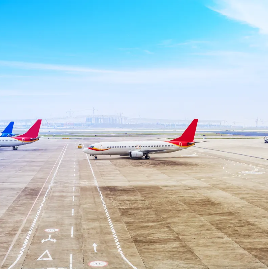Core Transportation Modes in Multimodal Systems
Airfreight: High-Speed Solutions for Time-Critical Shipments
Air freight remains really important for logistics these days, especially when something needs to get somewhere quickly. Companies can ship products across continents in just one day sometimes, which makes all the difference for certain operations. Think about how medical supplies need to reach hospitals fast or fresh seafood arriving at restaurants before it spoils. The air cargo business looks set to grow bigger too. Around 35 percent of international trade by value actually moves through planes, so it definitely matters a lot in how we move stuff around globally. What sets air freight apart from other methods is mainly those faster delivery times plus better reliability. That's why it stays a key component in any good shipping plan, particularly when dealing with expensive items or things that won't last long if delayed.
Ocean Containers: Bulk Shipping Across Continental Distances
Most of what moves between countries actually travels by sea. Around 9 out of 10 items shipped internationally make their way through ocean freight routes. Ships can carry massive amounts of cargo at once, which works really well when companies need to move big quantities of products like raw materials or finished goods across continents. Standard containers come in sizes like 20 feet and 40 feet long, making them easier to stack and handle at ports worldwide. Shipping companies have been forming partnerships and investing heavily in better port facilities to keep getting faster turnaround times. For businesses doing serious international trading, ocean freight remains one of the most economical ways to get products where they need to go reliably, despite all the paperwork and logistics involved in cross-border shipping operations.
Rail Corridors: Eco-Friendly Middle Mile Connectivity
Trains actually produce about 75% fewer emissions compared to trucks moving goods along the same routes, which explains why they play such a key part in connecting distribution centers across the country. For companies trying to cut down on greenhouse gases, switching to rail makes a lot of sense financially as well as environmentally. Many areas are working on building better connections between different types of transportation at rail terminals. These improvements help move cargo quicker while also taking pressure off busy highways. Putting money into electric trains and new technologies will only make rail lines greener over time, something that's becoming increasingly important as cities try to balance growth with environmental concerns in their transportation networks.
Long-Haul Trucking: Flexible Regional Distribution
Trucking over long distances still plays a vital role because nothing else can match how flexible it really is when it comes to reaching those hard to get places that aren't accessible via rail lines or waterways. The ability to handle last mile deliveries makes this even more significant since trucks actually move around 70 percent of all freight across most nations these days. We've seen some pretty cool tech improvements lately too, like better tracking systems and smarter routing software that make operations run smoother than ever before. All these upgrades help keep shipments on schedule, strengthen local supply chains, and allow carriers to pivot quickly when market conditions change unexpectedly.
Inland Waterways: Heavy Freight Movement on Natural Highways
Many people don't realize it but inland waterways actually provide a pretty good way to move heavy stuff around. Fuel costs are much lower compared to trucks, which makes them a budget friendly choice when dealing with bulk cargo shipments. Plus these water routes help take some pressure off our roads and cut down on carbon emissions too. When companies invest in better ports and terminals along these rivers and canals, it really opens up new possibilities for combining different transport methods. Businesses suddenly have more ways to get products where they need to go, especially to remote areas that might be hard to reach otherwise. For industries dealing with large volumes of goods, water transportation acts as a natural pathway that just makes sense from both a practical and environmental standpoint.

Strategic Mode Selection for Optimal Efficiency
Balancing Cost vs. Delivery Speed
Picking the right way to move goods means looking at how much something costs versus how fast it needs to get there, especially important for businesses in online retail and medicine delivery. When time isn't against them, many companies go with cheaper options like sea shipping because saving money matters more than waiting a few extra days. But when products need to arrive quickly, like medical supplies during emergencies or perishable items, paying extra for air transport becomes worth it. Most businesses run the numbers regularly to figure out what mix works best for their particular situation. Some might combine different methods depending on what part of the world they're shipping to or what kind of product it actually is.
Custom Routing for Perishable vs. Non-Perishable Cargo
When it comes to moving perishable goods around, custom routing really matters because these items need to get somewhere fast while staying at the right temperature. Companies now use live data feeds to tweak their delivery paths depending on what's happening with traffic jams, storm warnings, or sudden spikes in customer orders. This helps keep food from going bad and cuts down on wasted inventory. On the flip side, transporting things that don't spoil as easily gives logistics teams much more room to maneuver. They can plan routes with cheaper fuel options or wait for better shipping windows instead of rushing deliveries all the time. For instance, bulk grains or packaged snacks can handle delays far better than fresh produce would.
Environmental Impact and Sustainability Considerations
Low-Carbon Alternatives in Multimodal Shipping
The push toward low carbon tech in multimodal shipping matters a lot when it comes to cutting down on environmental damage. Many logistics firms have started mixing electric options with traditional transport methods just to cut those greenhouse gases. We see this happening through things like ships that run on both diesel and electricity, plus some companies experimenting with biofuels and LNG as alternatives. What makes these green moves so important? Well, they help shrink the carbon footprint across the entire logistics chain while fitting right into what organizations worldwide are trying to achieve through initiatives like the UN's Sustainable Development Goals for cleaner transport systems. The real test though remains whether logistics businesses can actually implement these new technologies without breaking their budgets or disrupting existing operations too much.
Port-to-Rail Integration for Emissions Reduction
Linking ports directly to rail networks represents one of the best ways to cut down on emissions since it reduces how much we depend on trucks around town. When cargo moves smoothly from ship to train instead of bouncing around on roads, the environmental impact drops dramatically. Ports that have good infrastructure naturally draw shipping firms looking to switch their inland transportation mainly to rail services. The difference isn't just theoretical either these changes actually slash CO2 output compared to what happens when everything gets hauled by diesel trucks. Money spent on building better intermodal facilities helps railroad operators work hand in hand with ocean carriers, which keeps everyone focused on hitting those tough emissions goals they've set for themselves. We're already seeing this happen in places where rail connections exist, and it's making a real dent in the carbon footprint of global shipping operations.
Overcoming Challenges in Multimodal Operations
Infrastructure Gaps in Emerging Markets
The lack of proper infrastructure remains a major problem for efficient multimodal shipping across many developing countries. Roads crumble after heavy rains, ports struggle with outdated equipment, and rail networks barely connect major cities in places like parts of Africa and Southeast Asia. Without better links between different transport modes, goods just sit stuck at borders or warehouses for days longer than needed. When governments actually start pouring money into road expansions, port upgrades, and new rail lines, things change dramatically. Look at Bangladesh recently investing $1.2 billion in coastal highways - cargo movement times dropped by 40%. Big banks like World Bank and private equity firms have noticed this too. They're funneling billions into infrastructure deals worldwide because they see real returns when supply chains finally work properly instead of breaking down constantly.
Regulatory Harmonization Across Borders
Dealing with varying regulations from one country to another creates major headaches for companies running multimodal operations, and this usually means longer wait times at borders plus higher expenses. Every place has different rules that shipping companies need to follow, sometimes requiring special documentation or inspections that slow things down considerably. If we could get these rules more aligned across borders, it would make moving goods much smoother overall. That's why organizations like the World Trade Organization keep pushing for simpler customs processes between regions. They want to see better coordination so that trucks, ships, and planes don't spend so much time stuck waiting while paperwork gets sorted out. For logistics firms, this kind of regulatory alignment would save money and reduce frustration for everyone involved in the supply chain.
Emerging Technologies Shaping Future Transport
IoT for Real-Time Multimodal Tracking
Bringing IoT into logistics has changed how companies track goods across different transport modes, giving them much better visibility throughout the supply chain. Logistics managers using these smart systems find they can cut down on wasted time by finding better routes, stop shipments from getting lost or damaged during transit, and save money overall. The continuous stream of information from connected devices also means customers get regular updates on where their packages are, something many businesses have started to offer as part of standard service. Looking ahead, we're seeing new ways to apply this tech in complex shipping operations. Warehouse managers report being able to spot potential problems before they happen, while fleet operators make smarter decisions about maintenance schedules based on actual usage data rather than guesswork. Better tracking isn't just about efficiency anymore it's becoming central to building trust with clients who want transparency at every stage of delivery.
Blockchain in Shipping Documentation
The shipping world might be on the verge of a major transformation thanks to blockchain tech, which promises secure and transparent ways to handle all those documents. What makes this so interesting is how it builds trust between everyone involved in the supply chain while making things run smoother because records can't be changed once they're written. Let's face it, traditional shipping still relies heavily on mountains of paper work that gets lost, duplicated, or worse yet - forged. We've all heard stories about containers disappearing or getting mixed up because someone filled out a form wrong. Blockchain cuts down on these headaches by simplifying the whole documentation process. Companies actually see better compliance rates and spend way less time chasing missing papers. The shipping industry is starting to test various blockchain applications right now. Some early adopters report better visibility into where their cargo really is at any given moment, plus much cleaner data across their systems. This kind of transparency matters when dealing with international shipments worth millions. For forward-thinking companies looking ahead, implementing blockchain isn't just about keeping data safe anymore; it's becoming essential for staying competitive in today's fast paced global market.
FAQs
What are the main modes of transport in multimodal shipping?
The main modes of transport include airfreight, ocean containers, rail corridors, long-haul trucking, and inland waterways.
Why is airfreight important in multimodal systems?
Airfreight is crucial for its high-speed solutions, allowing for rapid and reliable transport of time-critical and high-value goods over long distances.
How does rail transport contribute to environmental sustainability?
Rail transport is environmentally friendly, offering emissions roughly 75% lower than road transport, and is often included in eco-friendly logistics strategies.
What are the benefits of port-to-rail integration?
Port-to-rail integration helps reduce emissions by minimizing reliance on local trucking, offering a sustainable and efficient cargo movement solution.
How is blockchain technology transforming shipping documentation?
Blockchain technology enhances shipping documentation by providing secure, transparent processes that reduce errors and streamline operations.

 EN
EN







